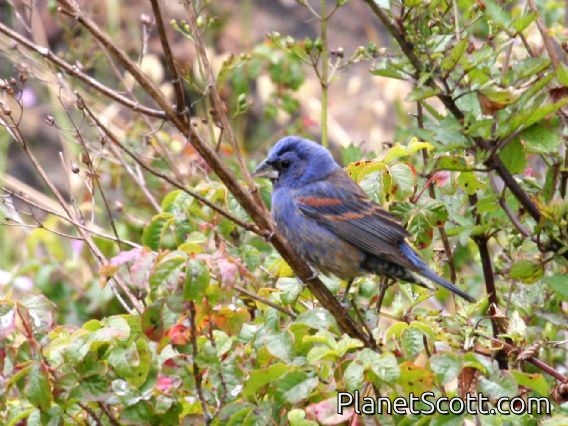Blue Grosbeak (Passerina caerulea)

Blue Grosbeak (Guiraca caerulea) Male - Glen Park

Blue Grosbeak (Guiraca caerulea) Male - Glen Park


×



Blue Grosbeak (Guiraca caerulea) Male - Glen Park

Blue Grosbeak (Guiraca caerulea) Male - Glen Park
About Blue Grosbeak (Passerina caerulea)
- Kingdom: Animals
- Phylum: Chordates
- Class: Birds
- Order: Perching Birds
- Family: Cardinals and Allies
The blue grosbeak, is a medium-sized North American passerine bird in the cardinal family Cardinalidae. It is mainly migratory, wintering in Central America and breeding in northern Mexico and the southern United States. The male is blue with two brown wing bars. The female is mainly brown with scattered blue feathers on the upperparts and two brown wing bars.
Source: Wikipedia
Visits
-
2006-08-14
Canyonlands National Park, United States of America -
2006-08-15
Canyonlands National Park, United States of AmericaSeen all along river, but especially common at Spanish Bottom. -
2007-05-26
Glen Canyon Park, United States of America -
2008-01-06
San Blas - Fort, Mexico -
2011-05-29
Del Puerto Canyon and Mines Road, United States of America -
-
-
-
-
-
-





